
© wallpaperscraft.com
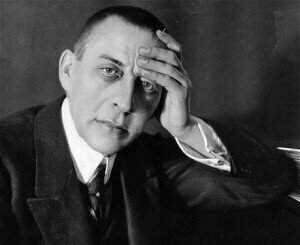
Rachmaninov © secure.i.telegraph.co.uk
Perhaps Rachmaninov’s most beautiful and expressive concerto, this work is perennially popular with audiences and gained even greater recognition when it was used as the soundtrack for the film ‘Brief Encounter’ (1945) where it provides a gloriously rich and passionate backdrop to the poignant romantic narrative of the film.
The British pianist Stephen Hough describes this concerto as “very awkward to play”: although Rachmaninov was one of the greatest pianists, at the time of writing the second concerto (1900-01) he regarded himself as a composer first and foremost, and hadn’t written that much for the piano. Like Tchaikovsky’s first piano concerto, Rachmaninov makes use of wonderful “big tunes” which express the whole experience of the work, with a moment of wild virtuosity towards the end for the pianist. Rachmaninov also uses contrapuntal elements, in the manner of Bach, to create all sorts of interior harmonies, underlying movement and dialogues between soloist and orchestra, which bring great richness to the overall texture of the work and highlight the beautiful main melody. The second movement is lyrical and serene, textured for a pianist with big hands (like Rachmaninov). The finale is “a beast” – rapid and virtuosic, it drives towards a thudding climax of epic proportions. It’s a work of great confidence and technical and musical assuredness. This piano concerto is “great” for all these reasons!
Evgeny Kissin
Beethoven – Piano Concerto No. 4 in G major
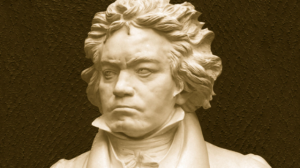
Beethoven © assets.classicfm.com
Composed in 1805/6 and premiered by Beethoven himself, this was the last concerto Beethoven wrote for himself to perform. At its first performances, the fourth concerto made little impact on audiences and only gained wider recognition after the composer’s death, thanks to the efforts of Felix Mendelssohn who appreciated its greatness.
The fourth concerto breaks with the traditional concerto format by giving greater emphasis to depth of content and replacing assertive virtuosity with lyricism, serenity and intimacy. This is established at the outset by the piano alone before the orchestra enters, reservedly at first before swelling to a graceful peak. The second movement is even more innovative with its extraordinary dialogue between gruff, implacable strings and the calm, conciliatory responses of the piano. The direction to keep the soft pedal down throughout was unprecedented at the time, creating an other-worldly atmosphere in the piano part. The finale is a witty and exuberant rondo. The piano sparkles throughout and the Presto coda offers some of the most glittering music Beethoven ever wrote.
Krystian Zimerman

Mozart © d3hnyzq4jj54js.cloudfront.net
Completed in March 1785, just a month after the concerto K466, this is another work which has gained wider recognition via popular culture, and is nicknamed ‘Elvira Madigan’ after the 1967 Swedish film for which the slow movement was used in the soundtrack. A movement of operatic expression, profound emotion and drama, the lyrical theme first heard in the orchestra and then taken up by the piano where it floats in a seemingly endless curve above gently pulsating strings.
The outer movements are symphonic in their conception and organization. The first movement has a grandeur and majesty, which provides a marvellous foil to some of Mozart’s most inventive piano writing with its rich figurations and robust dialogue with the orchestra. After the long-spun aria of the slow movement, the finale is an earthy rondo with a cheery “jumping” theme in the orchestra and witty call-and-response motifs with the soloist. The piano part uses scale and arpeggio patterns to enhance the themes, creating an atmosphere of triumph and joy.
Maurizio Pollini
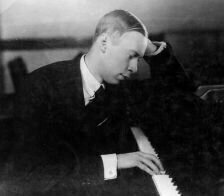
Prokofiev © gramophoneproduction.s3-accelerate.amazonaws.com
Of Prokofiev’s five piano concertos, the third is the most famous and the most popular. Simpler and more classical in its structure than the others, it contains all the composer’s familiar trademarks: ballet, fairy tale, sarcasm, irony – and plenty of virtuosity. It demands dexterity and stamina from the soloist and, as a result, is ranked one of the ultra-virtuosic showpiece concertos in the repertoire. It proved an unexpected choice for the young pianist Lauren Zhang, whose mature, poised performance in the final of the 2018 BBC Young Musician of the Year competition earned her the title.
Yet this is also a no “show-off” concerto; instead it’s a work of passionate expression shot through with great bursts of spontaneity. It begins with a simple folksong-like melody, first heard with solo clarinet. The music then unfolds in the manner of a perpetuum mobile with the piano never far from the fray in its authoritative melodies and filigree figurations. The middle movement is neo-classical in character, scored as a supple theme – announced by the orchestra alone – with five variations. Prokofiev described it thus: “In the first variation the piano treats the opening of the theme in quasi-sentimental fashion, and resolves into a chain of trills as the orchestra repeats the closing phrase. The tempo changes to Allegro for the second and third variations, and the piano has brilliant figures, while snatches of the theme are introduced here and there in the orchestra. In Variation IV the tempo is once again Andante, and the piano and orchestra discourse on the theme in a quiet and meditative fashion. Variation V is energetic. It leads without pause into a restatement of the theme by the orchestra, with delicate chordal embroidery in the piano.”
The finale is marked Allegro ma non troppo (“brisk but not too much”) yet it races along with all the energy of a Presto Vivace, largely due to the small note values and rocketing scale figure in the piano which give the movement a sizzling vitality.
Yuja Wang
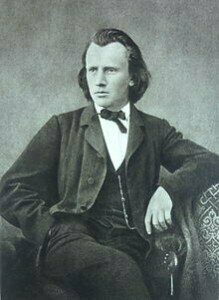
Brahms © ausseerland-magazin.at
Complex, subtle, elaborate and very difficult, Brahms’ second piano concerto is a mature work structured rather like a symphony with piano obbligato. For the performer, pianist Nicholas Angelich asserts that “it’s always important to have an understanding with the conductor” due to the demands of tempi and the piano’s integration with the orchestra to ensure a sense of unity. The work has a remarkable variety of things going on it within it – profound emotion, lyricism, extreme virtuosity, passages of great intimacy, and a grand spaciousness – and at nearly 50 minutes long, this concerto lasts longer than any other Romantic piano concerto. It is one of the great pillars of the Romantic repertoire in which the composer makes heavy technical demands on the soloist (a wide hand stretch and fleet fingers are desirable) while also asking pianist and orchestra to allow the narrative of this great four-movement work to unfold gradually to fully reveal its wonders.
Its musical arguments seemed more nuanced [than the first concerto], more open to exploration, more a search for common ground where, as in life, the sun can shine brightest … and warmest. – Stephen Hough
Emanuel Ax
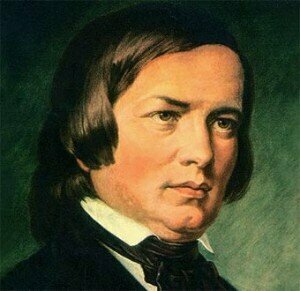
Schumann © 1pvx212tsjxq5z6yc4a59yw8.wpengine.netdna-cdn.com
“a chant of love and warmth, a story of passion and abandon, an ocean of emotions in which one voluntarily lives, breathes and loves” – Ingrid Fliter
Schumann wrote only one piano concerto, and as in his other music, this work contains a wealth of shifting emotion and moods, expression and poetry. Like Brahms’ Concerto No. 2, this work has a symphonic expansiveness, going against the prevailing custom of creating a work primarily as a vehicle for virtuosic showmanship. The work’s technical demands are nowhere near as complex as in Brahms, and are almost secondary to the overall narrative and thematic organization of the concerto. It is also a love song to his wife Clara, particularly the first movement, marked Allegro Affettuoso (“brisk with tender and passionate emotion”) where he takes two letters from her name, C and A, and creates a theme rich in expectancy. It’s an unashamed, heartfelt illustration of love, replete with sweeping romanticism and emotional volte faces.
The second movement has the intimacy of chamber music with its beautiful interaction between piano and orchestra, while the finale is a celebratory dance, life-affirming and triumphant.
Martha Argerich



Very interesting lists but a shame that Rachmaninoff is still spelt the old way, against the specific wishes of the composer. It is also spelt with ‘ff’ on his grave. All other spellings are wrong. Please give more respect to the wishes of this great composer.